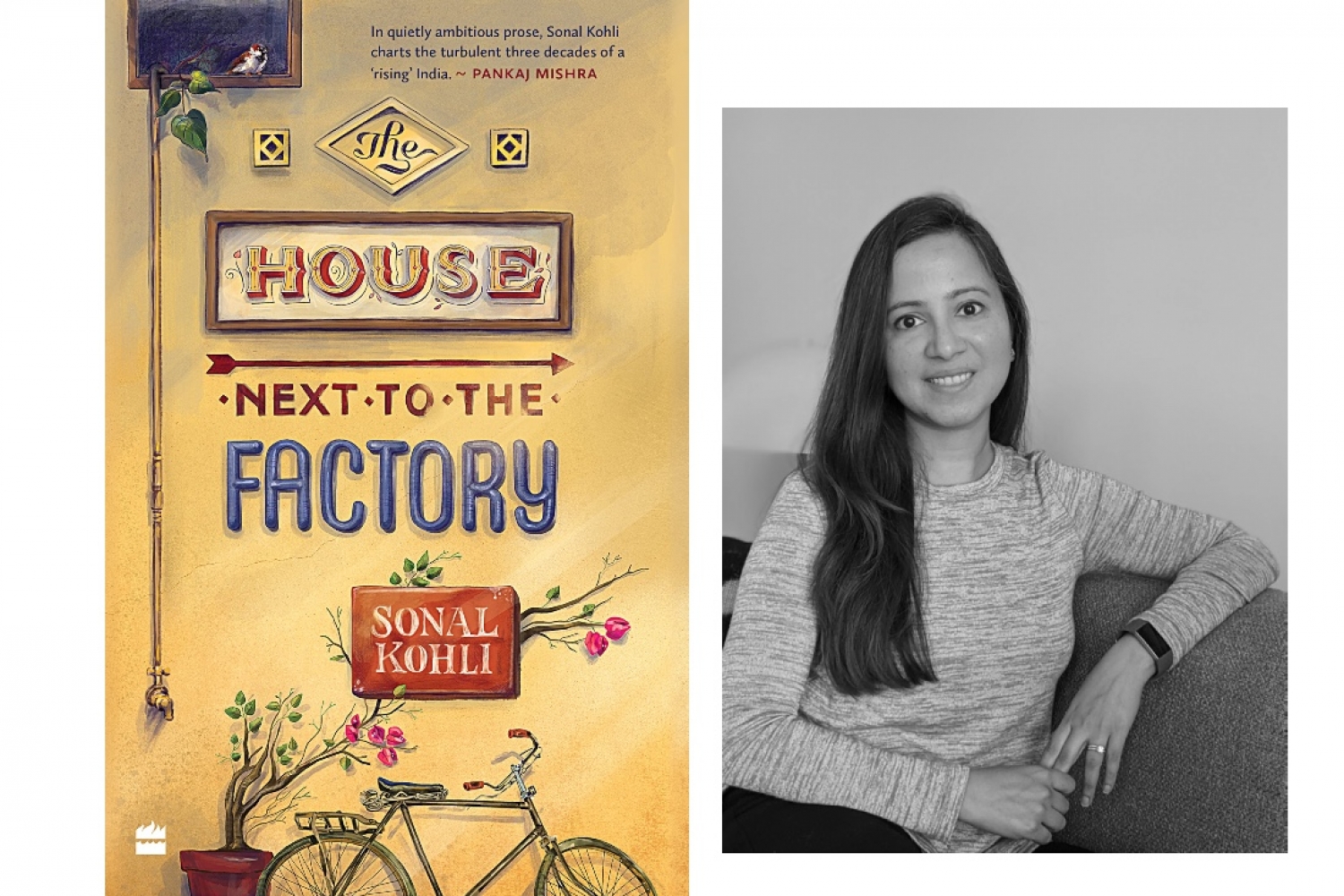

Sonal Kohli’s debut book is an extraordinarily nuanced piece of fiction. Wise quietude marks her prose, as it delves into the lives of an ordinary middle-class family, unfolding on the canvas of a post-partition India. With remarkable ingenuity, the author peels through the complexity of such an existence, and notions of class, culture, aspirations, desires, triumphs and tragedies coalesce all at once. Told through nine interlinked stories, The House Next to the Factory is an astounding read, marking the arrival of a riveting new literary voice. Author Sonal Kohli lends us some insight into her life and book below:
THE AUTHOR
I came to writing a little late in life, when I was in my late twenties. Even today, I feel amazed when a writer says that they were scribbling poems and stories when they werefive and knew that they would grow up to be a writer, a poet. It surprises me that someone can have that kind of awareness so early in life.
I grew up on books that most convent school girls read in the ‘80s: Malory Towers, Nancy Drew, Hardy Boys, Jane Eyre, Little Women. And even though I was enthralled by these stories, they always seemed to take place in a faraway world, disconnected from my immediate reality. I enjoyed the books, but I could not relate to them; I couldn’t imagine that a person with a life as ordinary as mine could ever be a subject of a book, let alone become a writer of one. It was only in my twenties that I stumbled across Hindi literature and translations of regional Indian literature, as well as Indian Writing in English. For the first time I found stories that were close to home, that were relatable, that were about characters like me and around me. For the next five or six years I read with an insatiable hunger, all day long, from the moment I woke up till the time I went to bed. Then, without thinking too much, I began writing, and it felt like the most natural thing to do.
THE BOOK
At the core (of the book) is Kavya and her middle-class Delhi family, and the lives connected with this family — servants, tutors, cousins, lovers. The book is set between 1980 – 2010, from the time Kavya is born to the time she turns 30. Over the course of these three decades, the family prospers and transitions from bourgeois to elite; we glimpse a changing India, as Nehruvian socialism gives way to material desires and the free market revolution. The cast of characters come in and recede, often to reappear in other stories. I grew up in Delhi, and my experience of the city, its life, its rhythm, is part of the book.
THE CREATIVE PROCESS
I was about a third of the way into the book at the time, and I remember questioning myself if I should now figure out the theme and write the remaining stories to fit that theme. But it felt like a forced approach. I wanted the connections, if any, to be natural, organic. So I kept writing stories as they came to me. I think I was two-thirds of the way into the book, out on an evening walk, when I suddenly saw how the characters connected with each other. It was a moment of revelation. All at once the disjointed pieces fell into place and the whole picture emerged.
THE CHALLENGES
It took me a very long time to write this book, and I think part of the challenge was that I had no experience as a writer, no formal knowledge of form and structure. I was never sure when a story was done or when it needed more work or where exactly it needed work. It troubled me somewhat that I had no formal education in writing or literature. During my Masters, I was required to give critical feedback to my colleagues’ novels and stories and, I believe, along with other things, it trained me to look at my own work from a distance and read it critically.
This is all exclusive from our September EZ. To read more such articles follow the link here.
Text Nidhi Verma
Date 24-09-2021